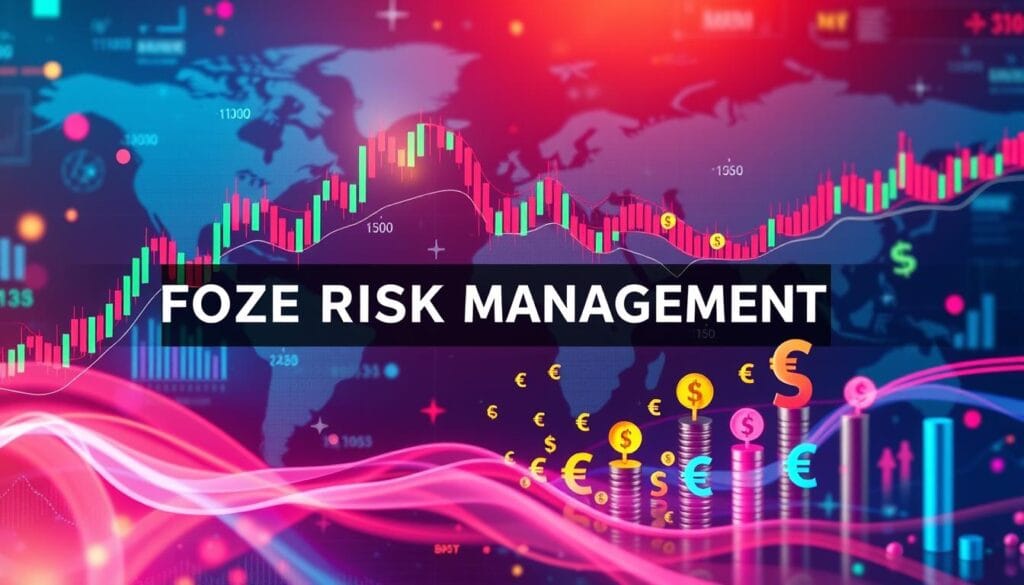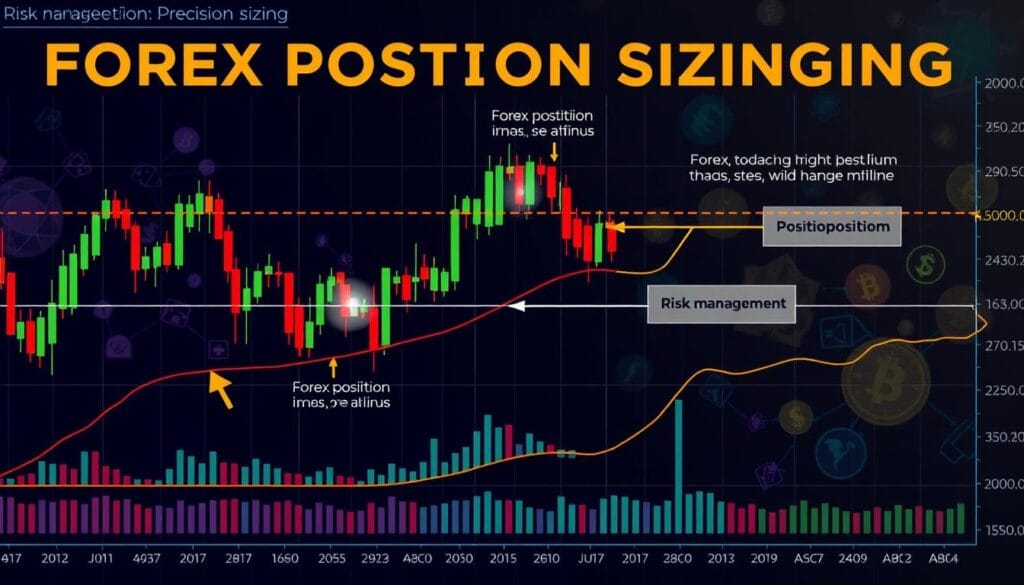Forex trading is exciting but risky. Protecting investments while making profits requires a careful approach. This guide covers effective strategies for managing risk in forex trading.
Forex trading has inherent risks. However, proper risk management techniques can help traders navigate the market confidently. We’ll explore key strategies to help you become a more successful trader.
Key Takeaways
- Forex trading carries inherent risks, but effective risk management strategies can help mitigate these challenges.
- Understanding the importance of risk management is crucial for forex traders to protect their investments and maximize profits.
- Key risk management strategies, such as position sizing and stop-loss orders, can help traders navigate the market with confidence.
- Calculating the risk-reward ratio is a valuable tool for evaluating the potential risks and rewards of forex trading decisions.
- Adopting a comprehensive risk management approach can empower forex traders to make informed decisions and achieve long-term success.
Understanding Forex Risk Management
Forex trading involves exchanging one currency for another. It comes with risks that traders must carefully navigate. Forex risk management is a strategy to identify, assess, and reduce these risks.
What is Forex Risk Management?
Forex risk management actively identifies and controls risks in currency trading. These risks include market volatility, leverage, and potential financial losses. Effective strategies help minimize risk exposure and improve trading outcomes.
Why is Risk Management Crucial in Forex Trading?
The importance of risk management in forex is vital. The forex market is highly volatile, leading to rapid price changes. This volatility, combined with leverage, can result in big gains or losses.
Proper forex risk management helps traders handle these challenges effectively. It protects capital, controls market exposure, and boosts chances of long-term profit.
Effective risk management in forex is key for success in unpredictable currency markets. Understanding forex risk management definition and applying strategies helps traders manage forex market volatility.
Forex risk management
Managing risk is vital for long-term success in forex trading. Forex risk management strategies help control potential losses in the volatile market. These techniques guide traders through the unpredictable forex landscape.
A comprehensive risk management plan is essential. It should outline risk tolerance and position sizing guidelines. The plan must include stop-loss orders to limit potential losses.
Traders need to make informed decisions with a disciplined approach. Managing forex trading risks requires careful analysis of market conditions and economic data. Geopolitical factors that affect currency pairs should also be considered.
Risk control in forex trading demands continuous monitoring of these variables. Traders must be ready to adjust their positions when necessary. Adapting strategies to changing market conditions is crucial.
Key Forex Risk Management Strategies
- Position Sizing: Determining the appropriate size of each trade based on the trader’s risk tolerance and account size.
- Stop-Loss Orders: Placing orders to automatically close a position when it reaches a predetermined price level, limiting potential losses.
- Diversification: Spreading investments across multiple currency pairs to reduce overall portfolio risk.
- Leverage Management: Carefully managing the use of leverage to avoid over-exposure and excessive risk.
- Fundamental and Technical Analysis: Combining the analysis of economic, political, and market data to make informed trading decisions.
Implementing these forex risk management strategies boosts trader confidence. It helps protect hard-earned capital from market volatility. Effective risk management is key to achieving long-term trading success.

Key Risk Management Strategies
Forex trading success hinges on effective risk management. Position sizing and stop-loss orders are two key strategies traders can use. These tools help control losses and boost long-term success.
Position Sizing
Position sizing determines trade size based on account balance, risk tolerance, and market volatility. This strategy limits potential losses while allowing traders to seize market opportunities. It helps maintain a balanced risk profile in forex trading.
Stop-Loss Orders
Stop-loss orders automatically close trades at set price levels. They protect against unfavorable market moves and prevent runaway losses. These orders are vital for managing forex risk with position size and stop-loss strategies in currency trading.
Combining position sizing and stop-loss orders enhances forex risk management. These strategies enable traders to make smarter decisions in the ever-changing forex market. They support forex position sizing and effective use of stop-loss orders in forex.
By using these methods, traders can boost their performance and financial resilience. They gain the tools to manage their forex risk with confidence and precision.

“Effective risk management is the foundation of successful forex trading. Implementing position sizing and stop-loss orders can help traders navigate the market’s volatility with confidence and discipline.”
Risk-Reward Ratio Calculation
The risk-reward ratio is vital in forex trading. It helps traders assess potential gains and losses. This metric guides decision-making and enhances trading profitability.
Calculating this ratio is simple: Potential Loss / Potential Gain. This formula helps traders evaluate their trade’s risk-to-reward profile. It aids in making informed decisions about positions.
| Metric | Description | Optimal Range |
|---|---|---|
| Forex Risk-Reward Ratio | The ratio between the potential loss and potential gain of a trade | 1:2 to 1:3 |
Optimizing the forex risk-reward ratio is crucial for success. Traders should aim for a ratio of at least 1:2. This means the potential gain is twice the potential loss.
A favorable ratio increases the chances of profitable trades. It also minimizes the impact of losses. Consistent application of this principle can improve overall trading performance.

“The key to successful forex trading is not about being right all the time, but about managing your risk exposure and optimizing your risk-reward ratio.” – Market Analyst, XYZ Financial
Conclusion
Effective risk management is crucial in Forex trading. It helps traders navigate the market confidently and protect their capital. Understanding Forex risk and key strategies can lead to better trading outcomes.
Key risk management techniques include position sizing and stop-loss orders. Calculating the risk-reward ratio is also important. These methods help minimize losses and boost long-term success chances.
Risk management isn’t just an add-on to trading. It’s a core part of any solid trading strategy. By prioritizing it, traders can make smarter choices and adapt to market shifts.













